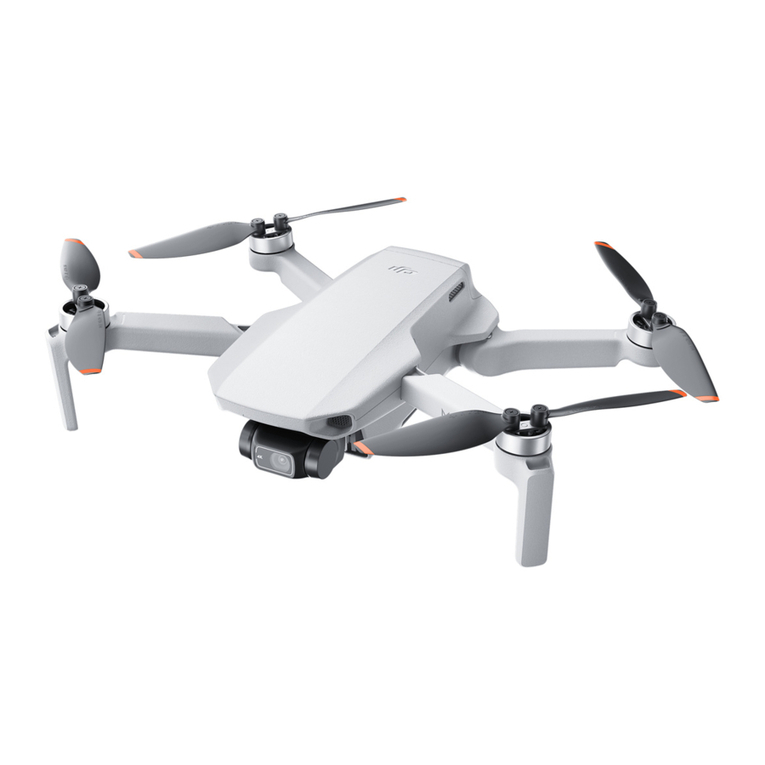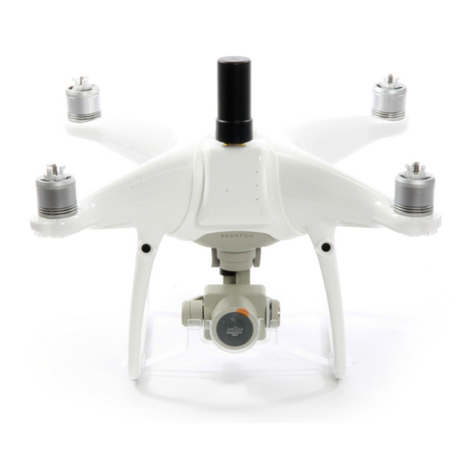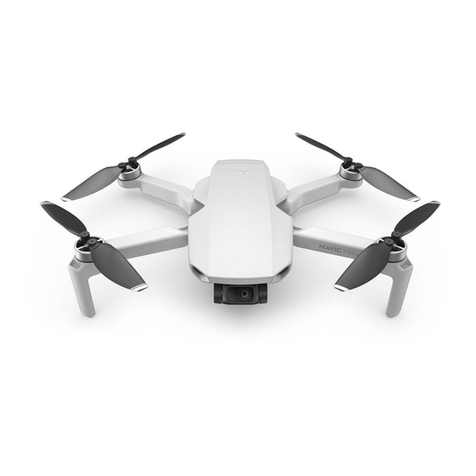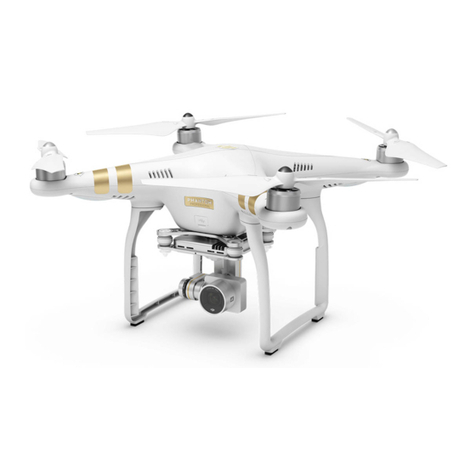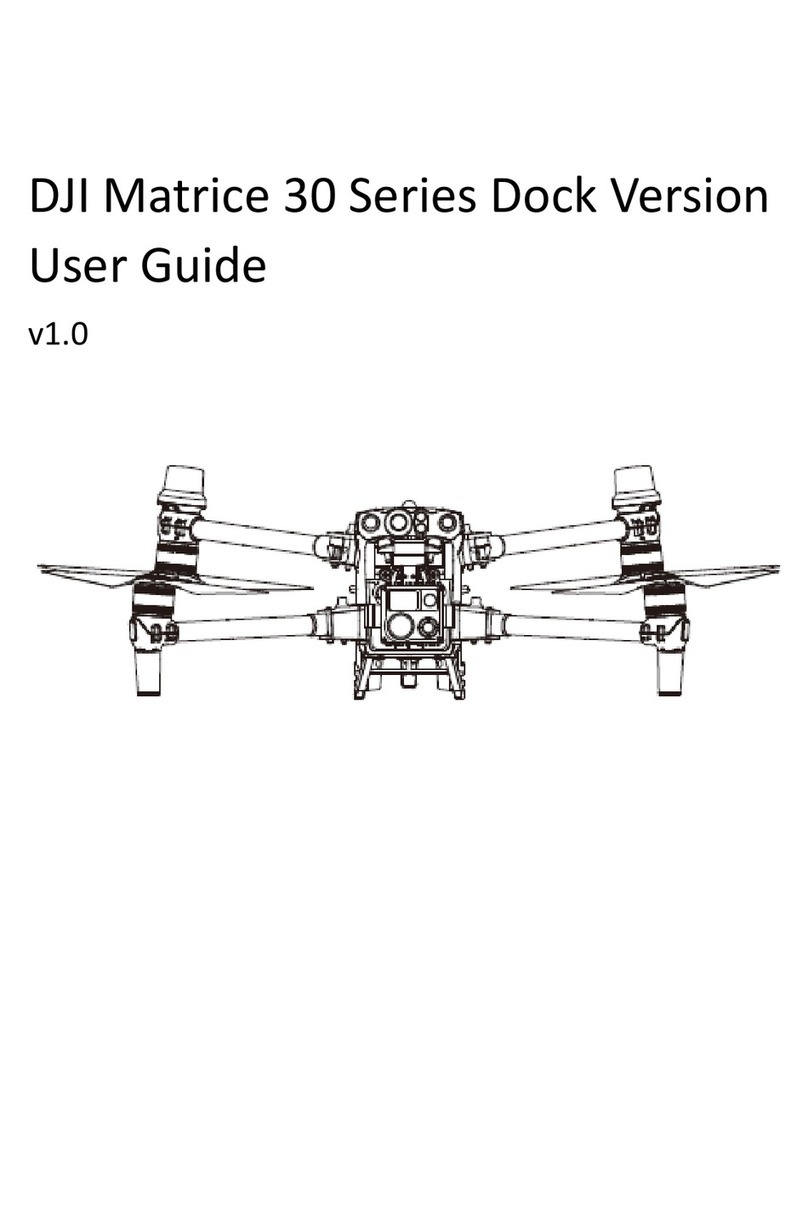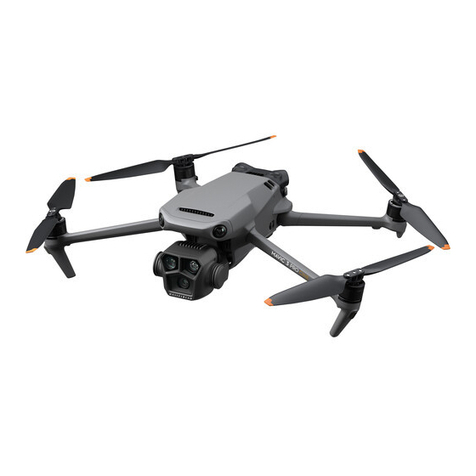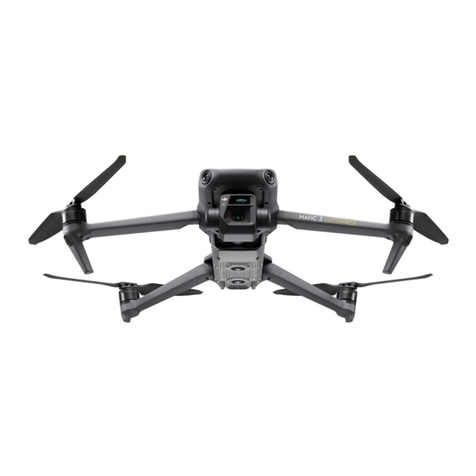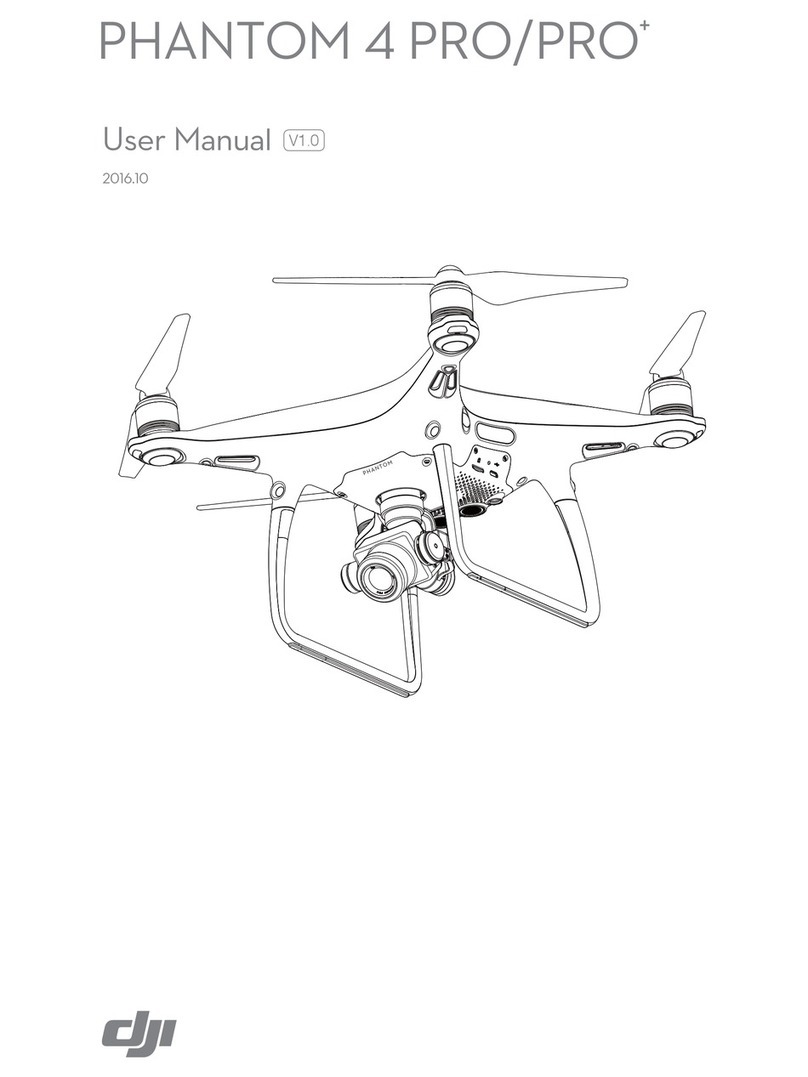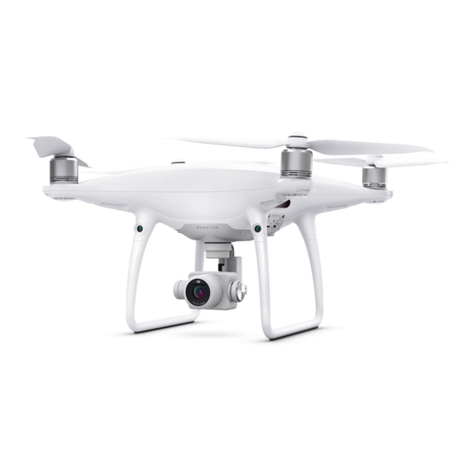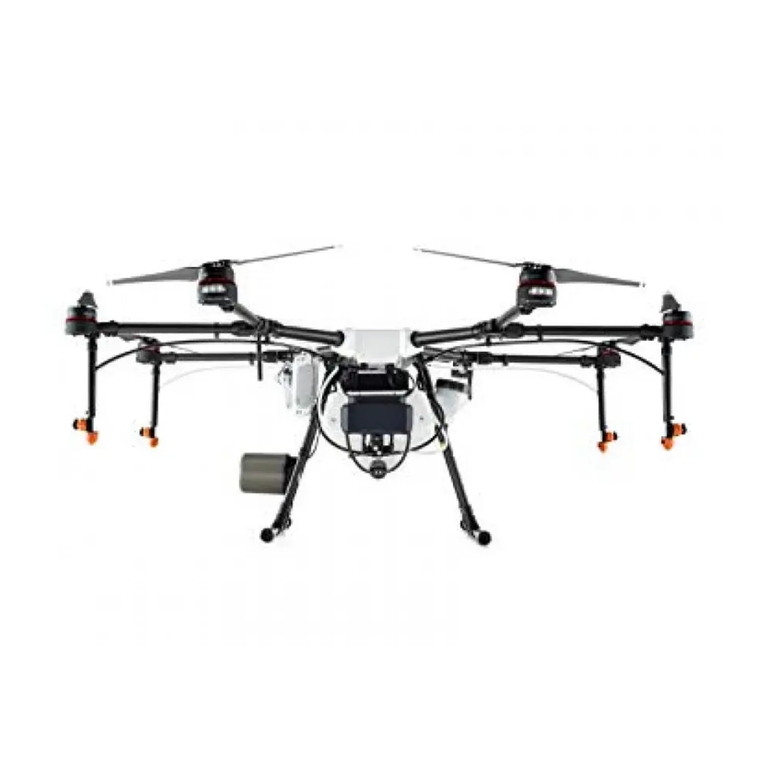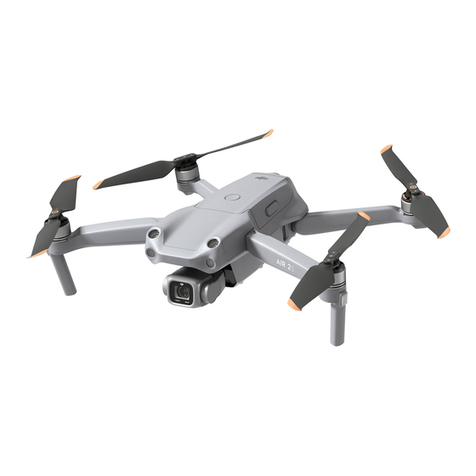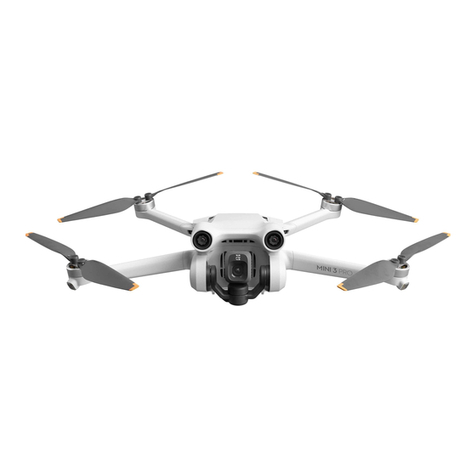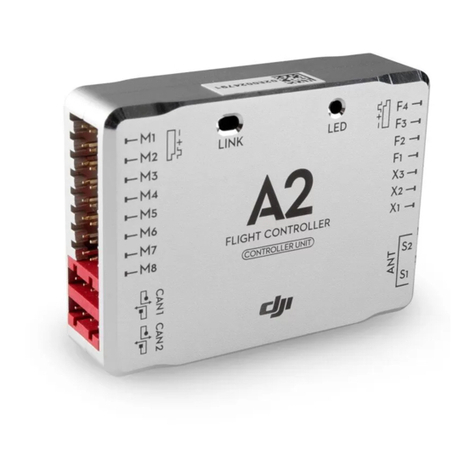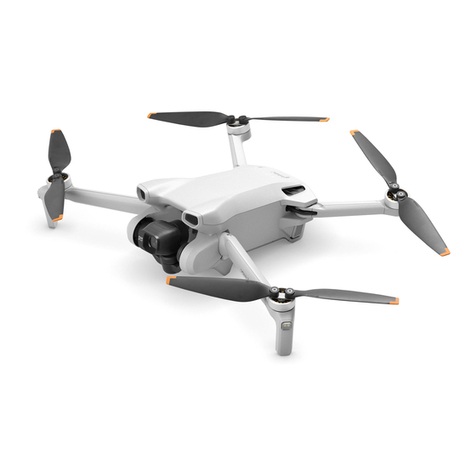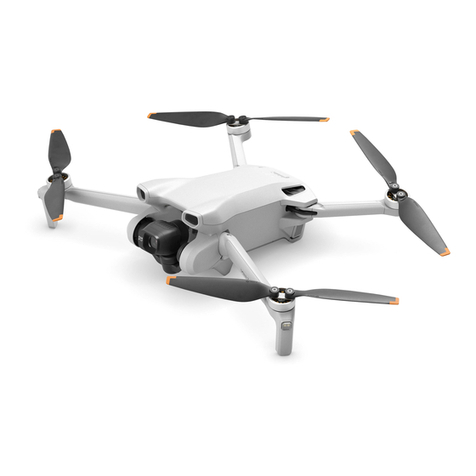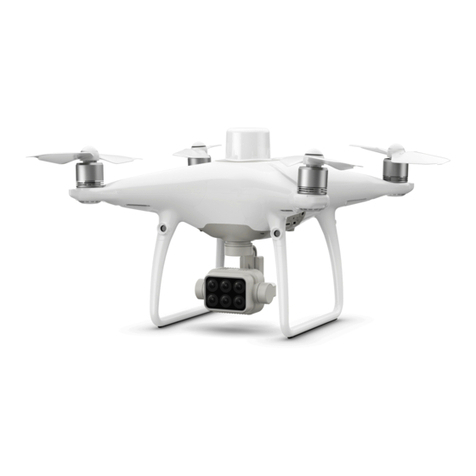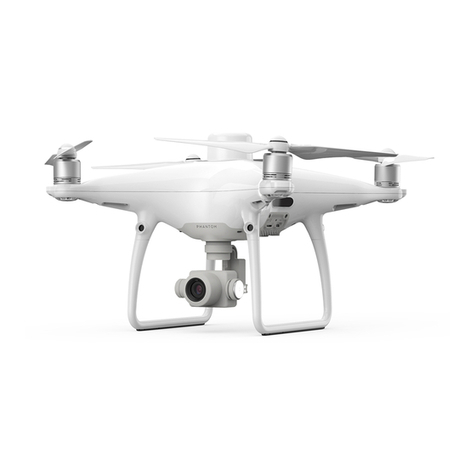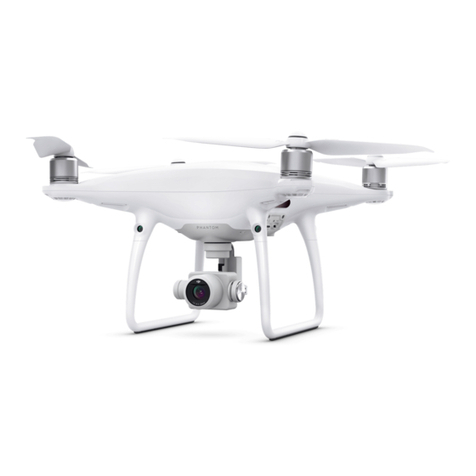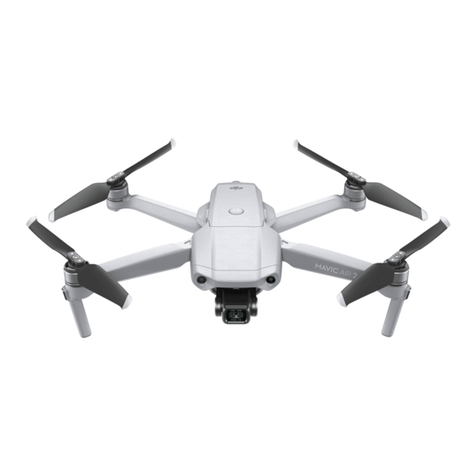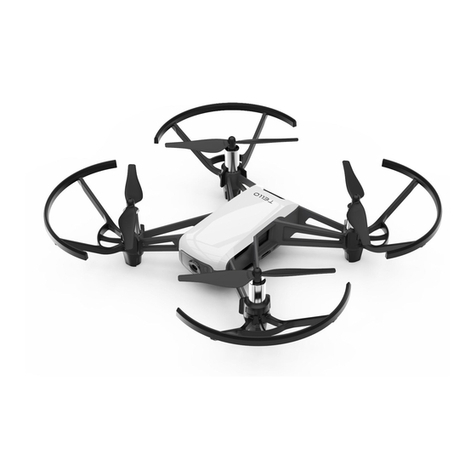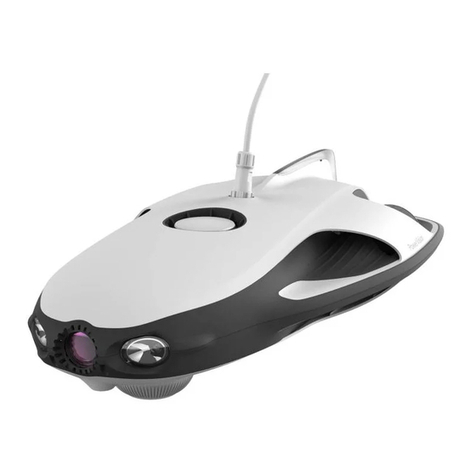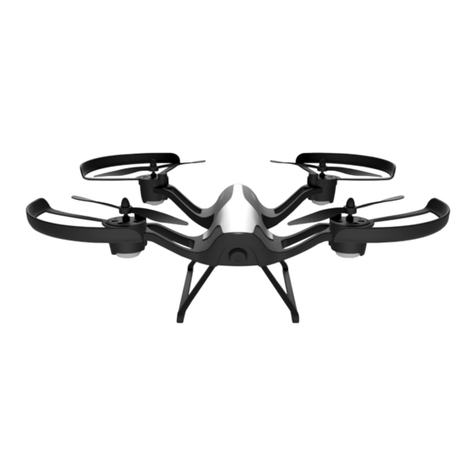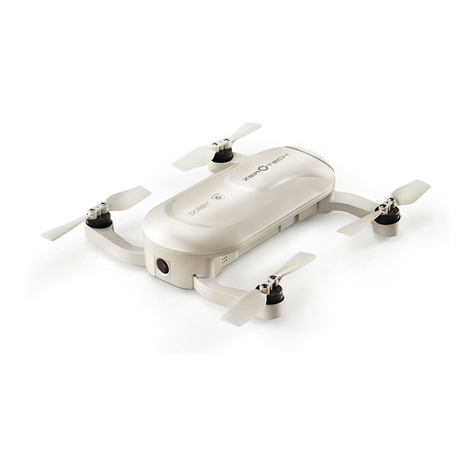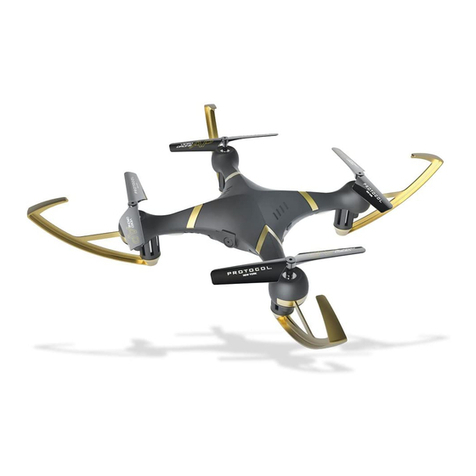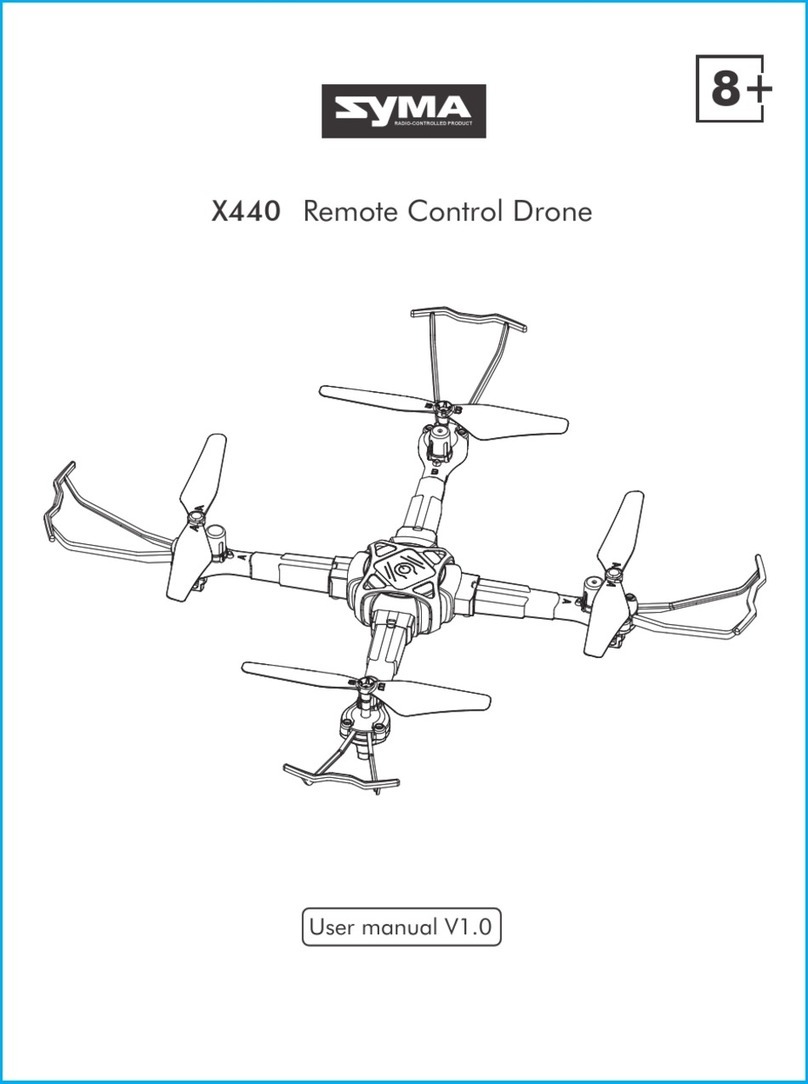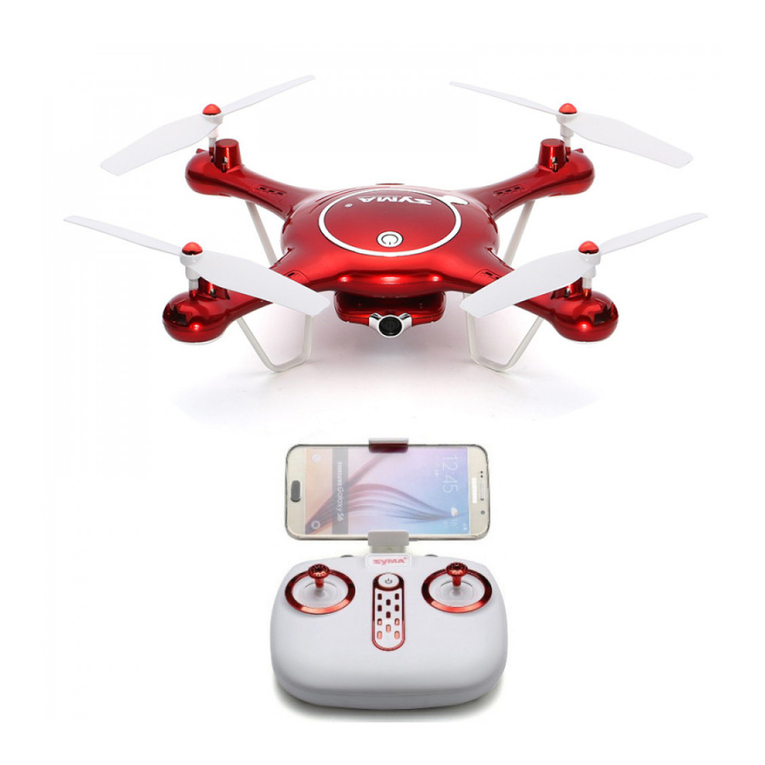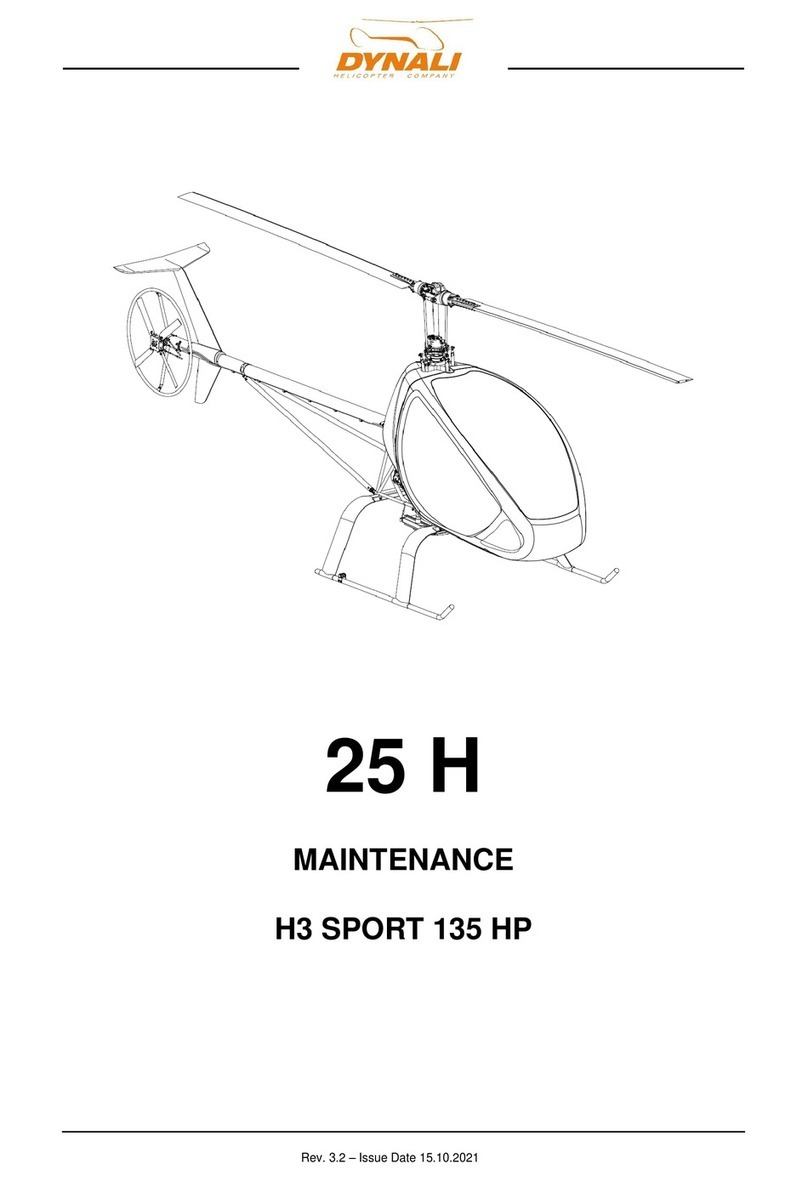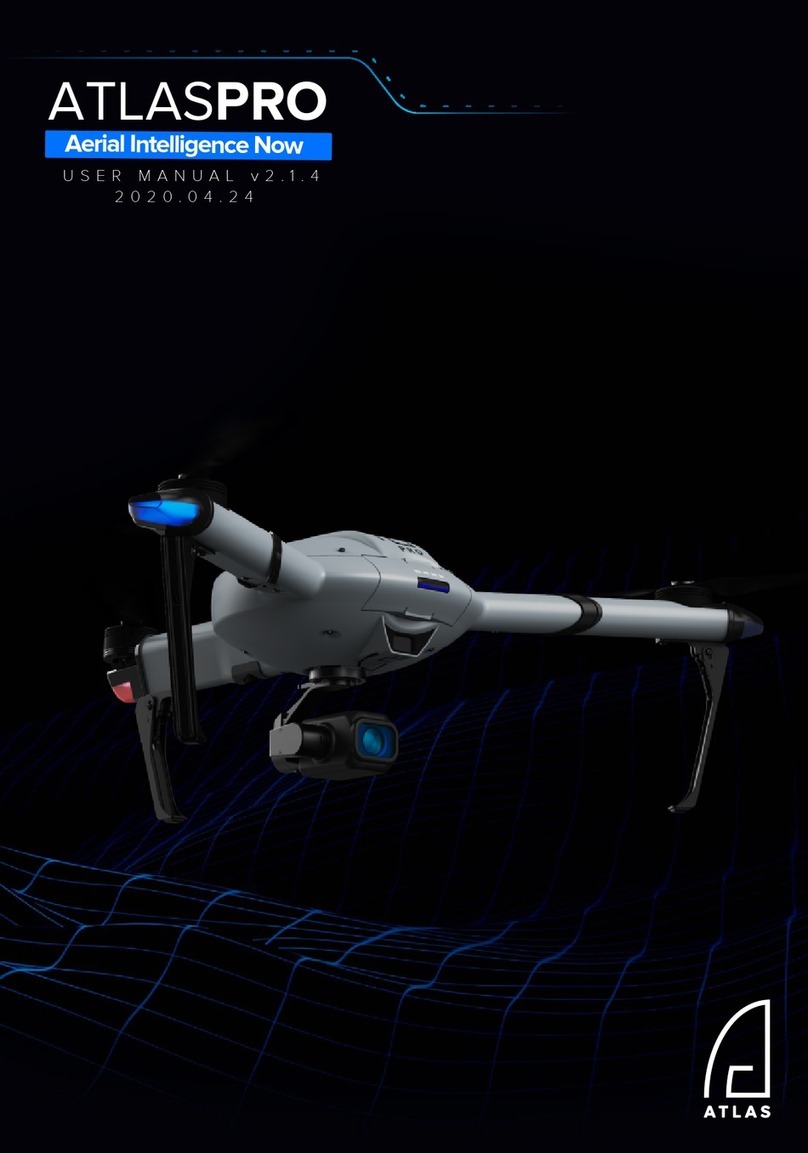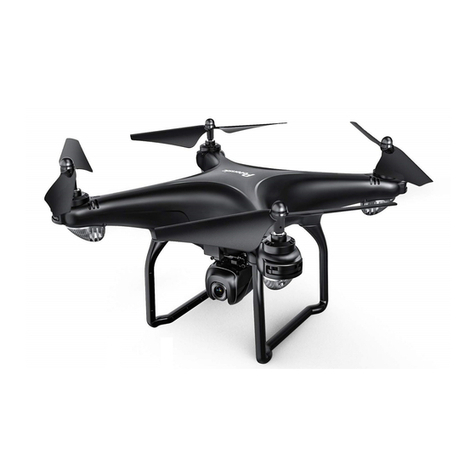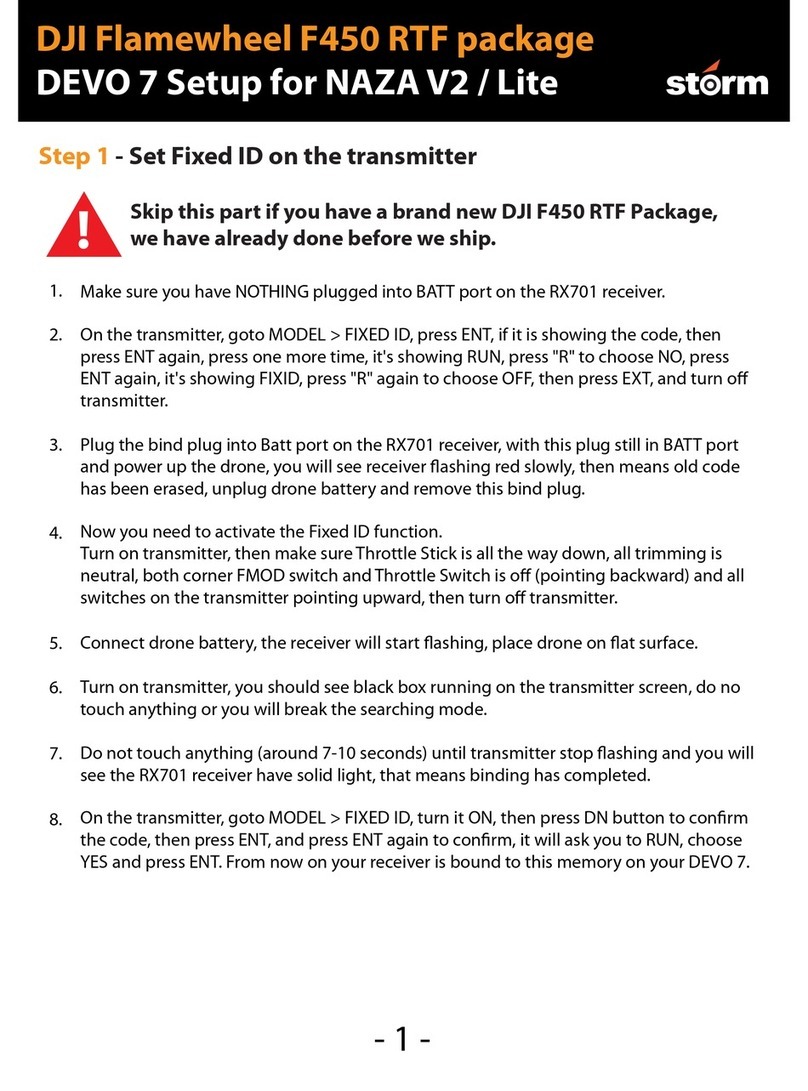©2012 DJI Innovations. All Rights Reserved. 9 |
Flight Test
1. If in GPS ATTI. Mode, place the aircraft in the open space without buildings or trees. Take off the
aircraft after 6 or more GPS satellites are found ( blinks once or no blinking). If in ATTI. Mode or
Manual Mode (it is not recommended for newcomer), you can skip this step.
2. Place the aircraft 3 meters away from you and others, especially children, to avoid accidentally injure.
3. Start-up
9Push both sticks to the left bottom or right bottom, to start the motors.
9Release the yaw, roll and pitch sticks and keep them at the neutral position avoiding the aircraft to tilt
to one side. At the same time push the throttle stick from the bottom quickly, because the motors will
stop if not to push the throttle stick from the bottom in time and you need to execute start-up
procedure again. When the aircraft is on the point of leaving the ground, continue to push the throttle
stick upwards to rapidly take off from the ground, pay attention not to push the stick excessively.
9Pay attention to the aircraft movement at any time when flying, and use the sticks to adjust the
motion status. Keep the yaw, roll and pitch and throttle sticks at the neutral position to hover the
aircraft at the height you need.
4. Nose down the aircraft slowly. Push the sticks to the left bottom or right bottom to stop the motors after
landing. (Push the throttle stick under 10%, and after landing 3s the motors will stop automatically)
5. Please always power off the quad-rotor first , then switch off the transmitter after landing.
FLYING NOTES!!!
9Please always switch on the transmitter first, then power on the quad-rotor before takeoff!
9If in GPS ATTI. Mode, keep the aircraft flying in the open space without obstruction. Pay attention to
the GPS satellite status indicator LED. If the GPS signal is bad (red LED blink twice or three times),
switch to ATTI. Mode. You may use the GPA ATTI. Mode again after the GPS signal back to normal
9If the multi rotor LED flashes quickly Red then this indicates battery voltage is low, please land ASAP.
Once the system enters the second-level low-voltage alarm, the aircraft will drop height automatically.
9DO NOT flying in ferromagnetic substance area, to avoid strong magnetic interference with the GPS.
9It is recommended to land the aircraft slowly, to prevent the aircraft from damage when landing.
9If the TX indicates low-battery alarm, please land ASAP. Because the TX abnormal work may cause
the aircraft out of control or even crash.
9After powering on and before the motors start, if the multi rotor LED double blinks yellow or green
without Tx stick movement, you should power cycle the multi rotor.
9The multi rotor will automatically land (or return home if in GPS mode) if the fail-safe mode is active.
9We recommend that you take off the multi rotor in ATTI. Mode. Manual mode is very sensitive.
9If the LED lights Red, please hover the aircraft until it turns off, so as to have better flight performance.
